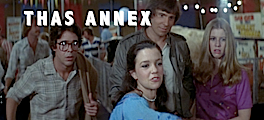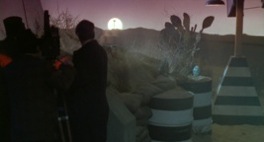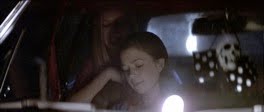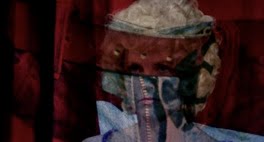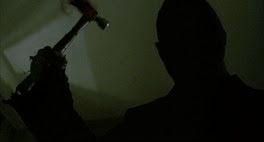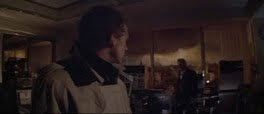Made in 1962 on a budget of $30,000 by through-and-through mid-Westerner Herk Harvey, who made only this one narrative fiction film in a whole career of making educational and industrial films for Kansas-based Centron Productions, Carnival of Souls was completed in a short three weeks by a crew of under ten people. But Harvey apparently wasn't out to just make a quickie creep-fest:
"We hoped for the look of a Bergman film and the feel of Cocteau," remarks Harvey on the commentary track of Criterion's deluxe DVD. (Source)
If more indie horror filmmakers thought this way, the world (or Blockbuster's New Release shelves) would be a much better place.
Unfortunately, at the moment I do not have up my sleeve the analysis this enigmatic, visually rich film so deserves, but I will say it's a film of an exquisiteness that strikes me as very easy to miss if one doesn't engage with it past the obviously meager production values and the self-consciousness of its essential pragmatism, seen in its adorably modest plot, screenplay, and aesthetic.
For now, I'll take the easy route and make a photo blog entry in honor of the film, to single out some potent visual cues and knockout images that stuck out at me during the most recent re-visit:
Motif:
Begin with the object.
Then Mary reaches in.




Begin with the objects:
the material is a prism with which to view us.

Artificiality of Environments. The stunning opening credit images: Art Deco naturalism. Geologic modernity. Progress-minded futurist outlooks on humans' evolved emotional awareness is perhaps only a misreading of what is just an increasingly refined sense of enhancing emotional banalities - a refinement much like rock formations smoothed and beaten against a stream.


The world, to Mary Henry's displeasure, spins like it does, without the endorsement of Mary Henry.
But she always comes out unfazed - in fact, even more on top of things.
(It's a shame that in the process, the company she was currently rolling with had to be officially, permanently crossed off the MVP list: Hot Wheels Hannah and Burn Baby Betsy, now official denizens of Drag City, Underworld)

Mary Henry is "out of our class," as the film puts it at one point. She finds a suitor particularly convinced of her sophistication:
Director Herk Harvey himself, as 'The Man.'

Mary is too good for this world.
She doesn't much care for being in it.
Understandably, sometimes. Which is what makes the film so beguiling - I find there's much to marvel at in the character of Mary Henry. The film comes off somewhat ambivalent about her plight. The wholesome advice and sanctimonious admonishments of priests are tinged with their incomprehension and dogma, and the amorous Mr. Linden's more than a little boorish and pathetic. Thus, the film begs the question if Mary would really be missing much if she stopped resisting the beckoning souls.
Well, she gets what she asks for.
 Perhaps the dead know how to enjoy themselves, better than the living?
Perhaps the dead know how to enjoy themselves, better than the living?
Mary, in her lifetime, hadn't been anything near the quintessential modest woman, but in the throes of her newest courtship, she finds herself with a newfound camera shyness.




Read-this! Reviews:
Kindertrauma on CARNIVAL OF SOULS



